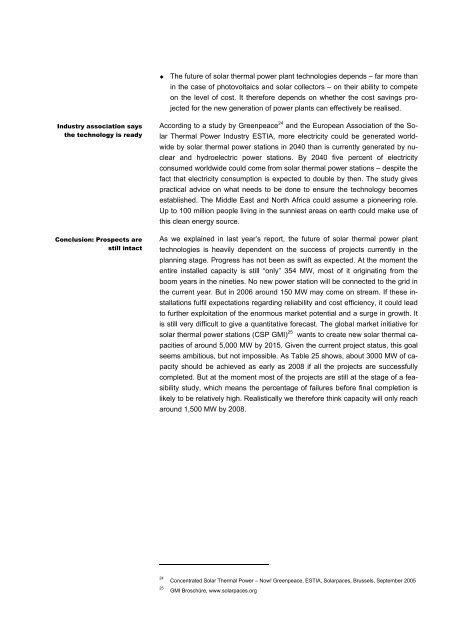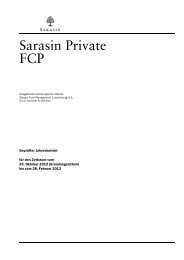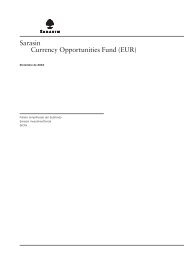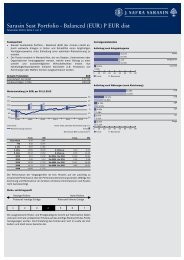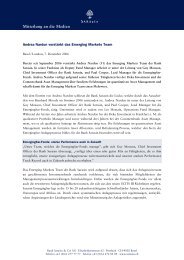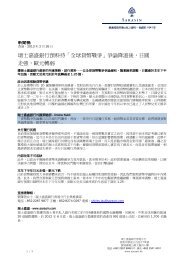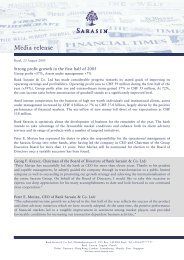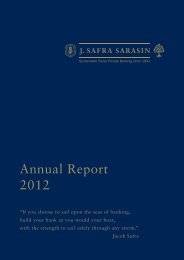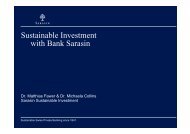Sustainability Report - Bank Sarasin-Alpen
Sustainability Report - Bank Sarasin-Alpen
Sustainability Report - Bank Sarasin-Alpen
You also want an ePaper? Increase the reach of your titles
YUMPU automatically turns print PDFs into web optimized ePapers that Google loves.
The future of solar thermal power plant technologies depends – far more than<br />
in the case of photovoltaics and solar collectors – on their ability to compete<br />
on the level of cost. It therefore depends on whether the cost savings projected<br />
for the new generation of power plants can effectively be realised.<br />
Industry association says<br />
the technology is ready<br />
Conclusion: Prospects are<br />
still intact<br />
According to a study by Greenpeace 24 and the European Association of the Solar<br />
Thermal Power Industry ESTIA, more electricity could be generated worldwide<br />
by solar thermal power stations in 2040 than is currently generated by nuclear<br />
and hydroelectric power stations. By 2040 five percent of electricity<br />
consumed worldwide could come from solar thermal power stations – despite the<br />
fact that electricity consumption is expected to double by then. The study gives<br />
practical advice on what needs to be done to ensure the technology becomes<br />
established. The Middle East and North Africa could assume a pioneering role.<br />
Up to 100 million people living in the sunniest areas on earth could make use of<br />
this clean energy source.<br />
As we explained in last year’s report, the future of solar thermal power plant<br />
technologies is heavily dependent on the success of projects currently in the<br />
planning stage. Progress has not been as swift as expected. At the moment the<br />
entire installed capacity is still “only” 354 MW, most of it originating from the<br />
boom years in the nineties. No new power station will be connected to the grid in<br />
the current year. But in 2006 around 150 MW may come on stream. If these installations<br />
fulfil expectations regarding reliability and cost efficiency, it could lead<br />
to further exploitation of the enormous market potential and a surge in growth. It<br />
is still very difficult to give a quantitative forecast. The global market initiative for<br />
solar thermal power stations (CSP GMI) 25 wants to create new solar thermal capacities<br />
of around 5,000 MW by 2015. Given the current project status, this goal<br />
seems ambitious, but not impossible. As Table 25 shows, about 3000 MW of capacity<br />
should be achieved as early as 2008 if all the projects are successfully<br />
completed. But at the moment most of the projects are still at the stage of a feasibility<br />
study, which means the percentage of failures before final completion is<br />
likely to be relatively high. Realistically we therefore think capacity will only reach<br />
around 1,500 MW by 2008.<br />
24<br />
25<br />
Concentrated Solar Thermal Power – Now! Greenpeace, ESTIA, Solarpaces, Brussels, September 2005<br />
GMI Broschüre, www.solarpaces.org


